I’ve read my share of branding books—you’ll see a list of some of my favorites at the end of this article. They all invite companies, from startups to behemoths, to honestly answer these 6 questions.
This basic branding exercise is essential for startups.
I recently listened to several startup founders describe their marketing and growth strategy as throwing spaghetti on a wall. They’re just tossing stuff to see what sticks. Trial and error until you find your spot in the industry.
While there’s no way to completely avoid trial and error, formalizing your company’s brand gives you a true north to focus on. It’s the difference between tossing al dente noodles at a wall and archery. Not every arrow will hit the bullseye, but your aim gets better with every shot.
What is branding?
Branding gets into the essence of your company, but through the eyes and experiences of your customers.
Show off your branding through:
- Your logo
- Your website design
- The onboarding experience
- Customer service
- Content
- Your company’s mission statement and values
- Your company’s voice
- All the things
Honestly, it’s part personal discovery and part psychological analysis. Don’t be surprised if it takes you more than an afternoon to figure out.
Take your time and work the process until you have a brand that connects with your ideal customers.
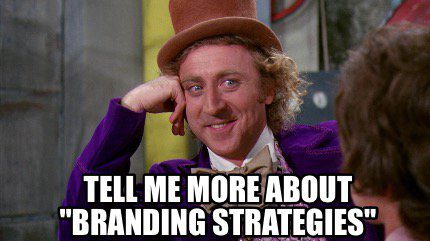
Basic Branding Questions for Startups
Regardless of your growth stage or annual revenue, you can (and should) go through this exercise regularly. To cater to my fellow startups, the examples and tips will be through your eyes.
Who do you serve?
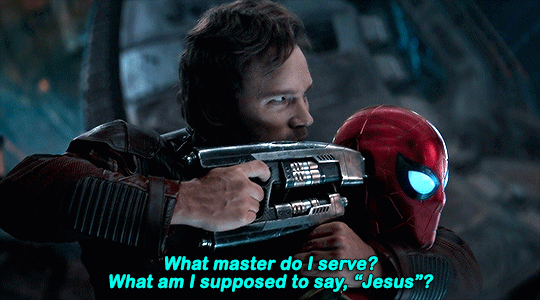
This question is all about your customer. To keep your branding completely customer-focused, you’ll need a clear visual and understanding of how your customer is and what they need.
Imagine your IDEAL customer
Most scenarios follow the 80/20 rule. So 20% of your customers will be ideal and account for 80% of your sales. Don’t try to develop customer personas for every possible type of customer. Be specific about your ideal customer so you don’t lose focus.
If you try to please everyone, you’ll end up pleasing no one.
Start with demographics:
- Gender
- Age
- Income
- Education
- Residence
- Marital status
Think of demographics as information you’d find in a census. This is all tip of the iceberg stuff, but many companies stop here.
They describe their ideal customer as male, aged 18-35 with a bachelor’s degree and think that gives them enough to work with. Wrong! You need to dig deeper into aspects of their personality, how they make decisions, and why.
Look into their lifestyle choices. If we start with a male named John, aged 18-35 with a college degree, we can imagine that he’s still young and active. He’s married with a young family. He still likes to travel, learn, and explore.
Now that he’s earning more money, he’s leveling up some of his purchases—not quite high end, but not purely functional.
Other things to add to the lifestyle picture:
- Diet
- Investments
- Recent purchases or brands they regularly buy from
- Hobbies
Now that the picture of your ideal customer is coming together, start to deep dive into their desires and needs. In other words, answer why they make decisions.
John wants to be a good, reliable provider, so he’s not a big risk taker. He wants others to see him as a leader in his given field. He wants to wear some of his success in his clothes, cars, and home. You know, enjoy some of his success.
He’s busy and wants to be efficient. He also wants to exponentially increase his output, whether in money or productivity.
He’s not afraid to try new things. As a Gen Z or Millennial, he’s born to embrace technology and likes being an early adopter.
Do you see how much more informative this is than a basic demographic infographic? It’s so much easier to market and build for people that you can see.
Learning about your ideal customer
As a startup, you won’t have lots of money to spend on extensive market research. You may not even have customers to interview, but there are some MacGyver tactics you can use to learn about your ideal customer.
- Talk to people. If you have a fuzzy idea of who your customers are, go to where they hang out and ask them to test a demo of your product. You can even do this online through social media polls or surveys. Consider tacking on a little ‘thank you’ gift like a gift card.
- Gather data from Google Trends or third-party research reports from sources like the Pew Research Center or Statista.
- Set up a focus group around your beta or demo. Again, this can be virtual or in-person. Watch them closely as they use your product and ask them how they feel while using it.
- Leverage your existing network. Friends and family are a great source of information. They’ll probably help you for free, but they may be less honest in their feedback.
You should expect to refine (and maybe redefine) your ideal customer as you gather more information.
What transformation can they expect?
You may have heard of the hero’s journey. Donald Miller’s book, Building a Story Brand, outlines how to make the customer the hero of their own story.
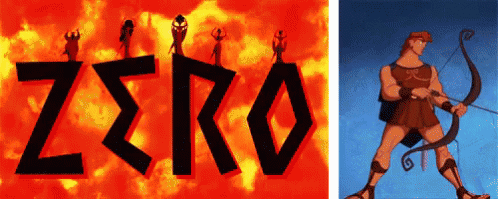
Framing how customers use your product to promote their own hero’s journey will help you deliver a brand experience that turns users into fans.
This transformation doesn’t have to be dramatic. Instead, think back to your ideal customer’s lifestyle and desires. What are some normal, natural stressors or pain points that he experiences?
I imagine our guy is stressed for time. He probably feels anxious and worries about letting people down. Maybe he’s afraid about feeling foolish or failing in front of his boss. Depending on what he does for work (a detail that should really be part of the persona you’ve created), he may not have access to equipment or software to help him be more effective.
In every hero’s journey, the hero faces a foe or some kind of challenge. The villain may be an actual person or thing, but it’s most likely a feeling like anxiety or fear that he has to overcome.
Try physically mapping out your customers current state or process, specify their blockers and pain points, then describe what their life could be like after using your product.
Most importantly, describe how customers can make themselves the hero of their own story. Don’t position your company or product as a savior. Instead, position your company as a wise wizard or guide or tool that amplifies your customer’s skills.
Customer transformation in product development
Mapping out the hero’s journey isn’t just a branding exercise. It directly affects product development. Let me explain.
As a developer, you can easily see the holes, deficiencies, and bad user experiences in the customer’s current state. You can then design products and services that fill in those gaps.
And even better, you can be assured that you’re building what your customers actually want and need, not just a cool widget or app you designed one weekend.
Looking through the lens of the customer’s journey also helps to remove your own biases about your product and industry.
Instead of thinking “You know what would be cool in my industry…,” you’ll build products that answer “You know what people in my industry really need and want…”
How can I help clients get from A to B?
You’ve identified your ideal customers and the pain points they want resolved. Now it’s time to describe how your company can help them.
This question is a two-parter:
- How can our products and services help our customers be successful?
Dive into the customer experience, product features, and the level of support you’ll provide.
- What makes our solution unique from other offers in the market?
This is a branding question. Imagine a customer is looking for an investment app and they have to choose between your app and a competitor’s. What will make them choose you?
Your uniqueness has nothing to do with your product or the bells and whistles you’ve built. Like most technology, what’s new and novel will be standard issue in time.
If you remember driving a car during and before the 2000s, you know that powered windows used to be an upgrade. Now it’s an every car, from Kia to Rolls Royce.
What will differentiate your company from others in the field will be how you make the customer feel when they use it. Does it help them complete the image they have of themselves?

Deb Gabor in Branding is Sex helps companies answer this question by reviewing the customer’s hierarchy of needs, much like Maslow’s.
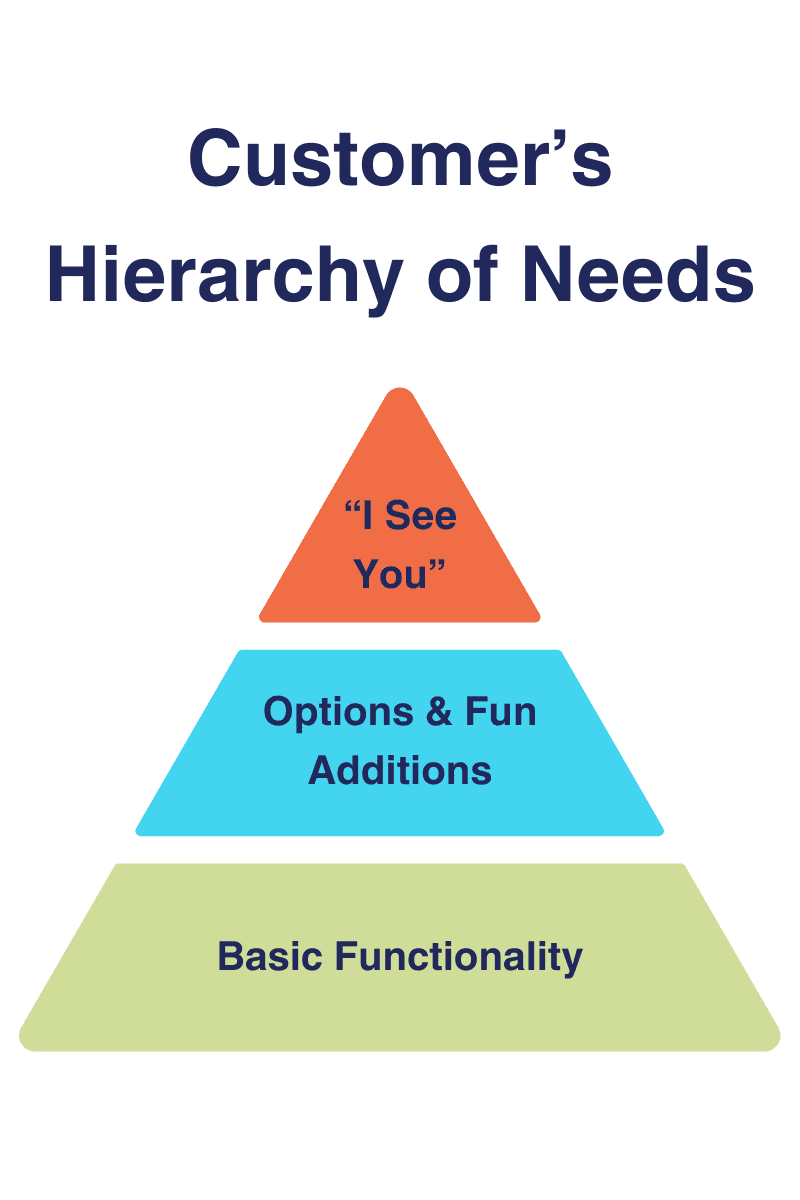
The foundation is all about having the basic offerings within that category.
Let’s say I’m in the market for a new phone.
At the very least, I expect a phone to have a camera, ample storage, internet access, and basic texting and calling capability.
The mid-tier of needs will include some product differentiators that excite people, like camera resolution, battery life, and color options. Notice that these are still functional or feature-specific differences that haven’t quite reached the top tier.
The top tier is reserved for what is special or unique about the phone company. They will meet my psychological or emotional needs for having a smartphone.
Full disclosure, I’m an iPhone user and I doubt I’ll ever defect. The question is why. Androids have proven to be a techie’s dream with boosted productivity, power, and more buying options.
I have an iPhone (and always will for the foreseeable future) because of how it makes me feel. I think the iPhone is prettier. I believe it’s the cool-kid phone. I feel capable because I know it will have everything I could ever need during the day. I can be connected to everything and everyone.
I’ve become so attached to my phone that I feel all itchy when I can’t find it. My phone has become part of my identity as a professional and modern woman.
Apple didn’t just win my business because they make the best phones. I’m a loyal customer because it connects with my vision of myself.
So you see, uniqueness is about connection, not product capability.
How does this work with B2B?
Anytime I mention feelings and emotions in marketing, there’s always some B2B representative who says that approach won’t work with companies.
FALSE.
Companies are run by people with real concerns and objectives about their job fulfillment. When you think about your preferred carrier (UPS, DHL, or FedEx), what sets them apart?
Most likely it’s their reliability and how they help you accomplish your job. You’re probably perceived as an employee that never misses a shipment or deadline. Those glowing reviews make you feel successful, smart and accomplished. Your shipping carrier helps you feel that way.
Why are you doing this?
In other words, why are you starting this business? What drives you?
This is where you can list mission statements, values, and other mantras that speak to the human part of your business.
You’ll weave this into your branding by being able to tell stories.
For startups, there’s nothing better than the story you’re trying to tell. Don’t forget to make your customer the heart and focus of that story. Show them how your company can help them become better, happier, smarter, more proficient, etc.
The story of the iPhone is a popular example. According to legend, Steve Jobs saw millions of people walking around with separate mobile devices and music players and thought they’d like to have it all in one device.
Eventually, Apple would add email, messaging, browsing, and cameras to their devices all in the name of convenience.
It’s safe to say that innovation, beautiful design, and connectivity are what drive Apple. It’s their differentiator and you see that drive reflected in every product line.
What’s the story they tell their customers?
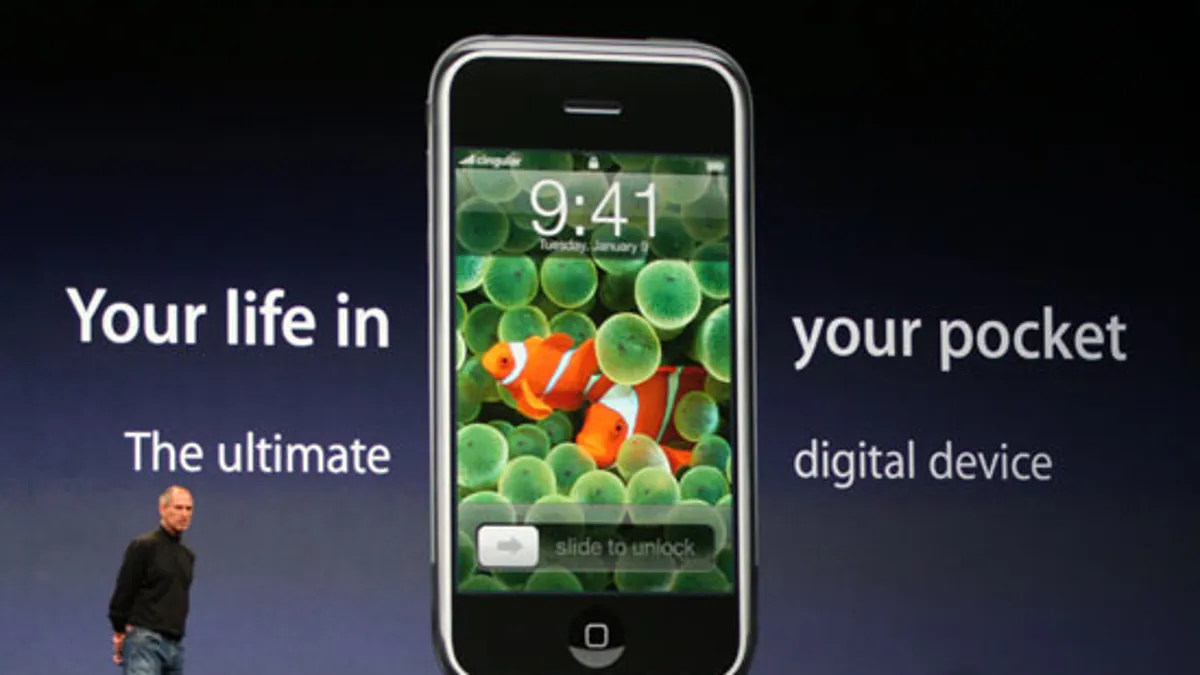
Everything you need is accessible on your phone.

Your life is easy to manage with an iPhone.
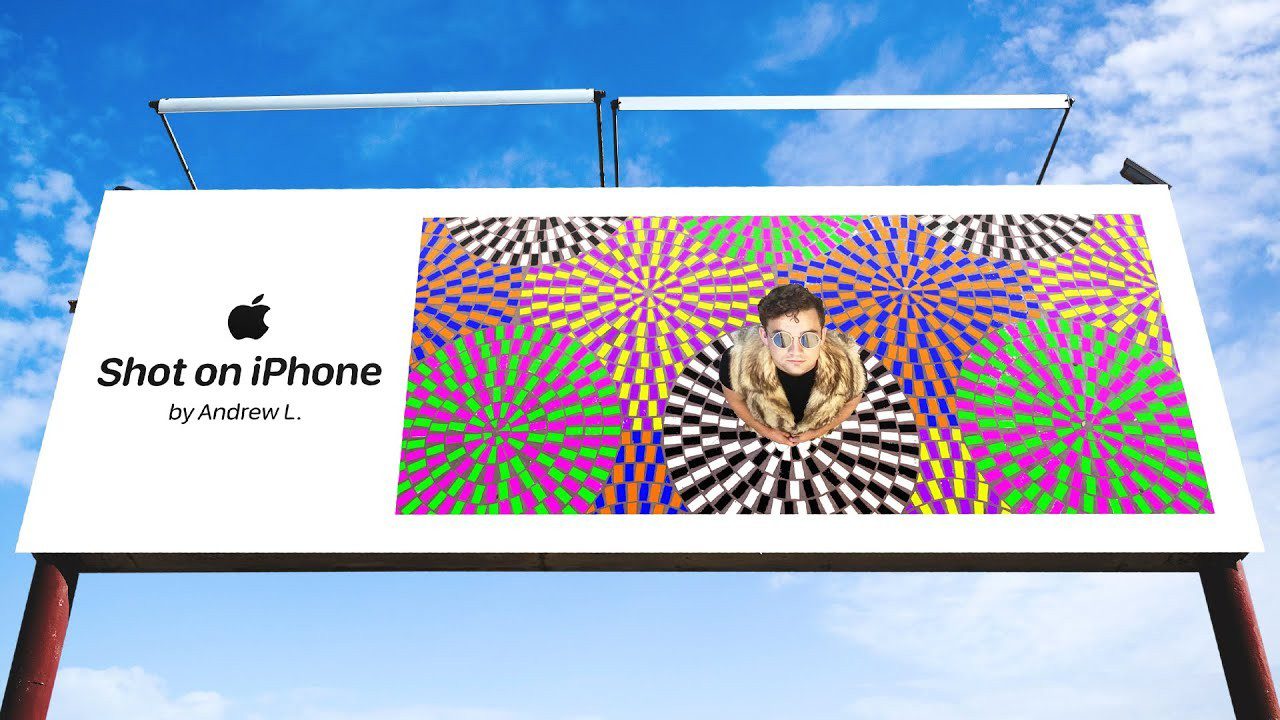
Everyday you can do amazing things with an iPhone.
That’s some good storytelling.
Am I done branding now?
Um, no.
Branding is a wash-rinse-repeat exercise. You’ll quickly lose touch with the market and customers’ needs if you don’t continually stress test your brand.
If you sit for 3 minutes, you’ll be able to quickly rattle off brand giants that fizzled out because they couldn’t keep up. Or they were too confident that they knew what their customers wanted.
Blockbuster
Kodak
Blackberry
Xerox
Segway
Borders
You don’t need to completely overhaul your brand every 18 months, but you do need to regularly do this one thing:
Talk to your customers!
They’ll tell you when they’re unhappy or dissatisfied—especially then! Whether you host focus groups, network, jump on service calls, or engage with them on social media—just talk to them!
Then check your current branding efforts against their comments. Make sure that how you identify as a brand is also how your customers see you.
Do I need to work with a marketing agency?
At the risk of tanking my business, the answer is no.
You can read the same books I do (see my list below). You can read lots of articles about branding and learn how to do it on your own.
Your budget may even require that I’ll-figure-it-out attitude..
But you may need the help of an outside agency if:
- You’re too close to your brand. For many founders, your business is your little corporate baby. That may also mean you’re blinded or biased toward gaps in your branding strategy.
- You feel “stuck” and don’t know how to grow. Again, fresh eyes can help you see the problems and get those creative juices flowing.
- You’re struggling to stand out. Crowded markets usually require bold and memorable branding.
Whether you decide to work with an agency or not, after reading this article you’ll be in a better position to talk the talk.
Here’s my beginner’s guide to branding:
- Deb Gabor, Branding is Sex
- Donald Miller, Building a StoryBrand: Clarify Your Message So Customers Will Listen
- Margaret Mark and Carol Pearson, The Hero and the Outlaw: Building Extraordinary Brands Through the Power of Archetypes
- Radim Malinic, Book of Branding: A Guide to Creating Brand Identity for Startups and Beyond
If you liked this article, sign up for our newsletter for more ridiculously helpful tips and guidance.


